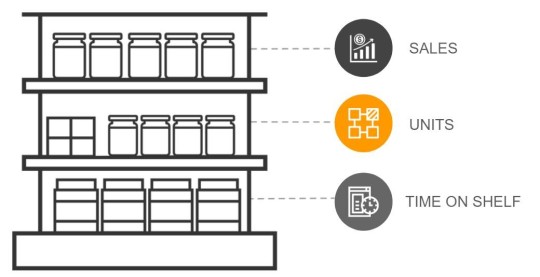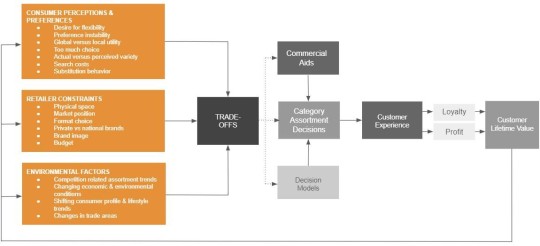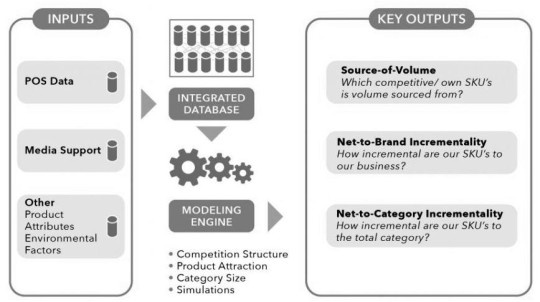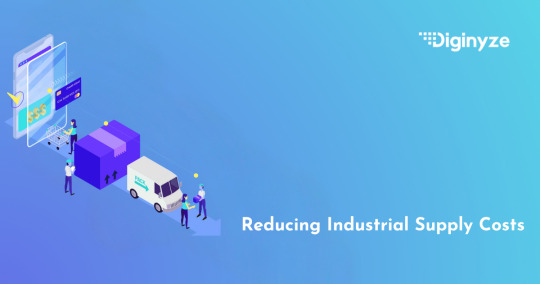#inventorymanagement hashtag
Explore tagged Tumblr posts
Text

👉 Read the full article to discover how we can help you grow your business!
#CannabisIndustry hashtag#RetailSuccess hashtag#InventoryManagement hashtag#GetGlassDistribution hashtag#BusinessGrowth#cannabislifestyle#420life#cannabiscommunity#cannabisaccessories#holidaydeals#cannacommunity#cannabis#smokingaccessories
0 notes
Text
Dynamic Assortment based on Seasons and Demand

Written By: Gargi Sarma
Mexico is distinguishing itself as one of the major markets through persistent development and gradual but consistent expansion in numerous areas. One industry that could outpace Mexico's typical projected national growth is the retail and consumer sector. By 2028, the retail market in Mexico is anticipated to expand at a CAGR of 5%. A mix of sociodemographic and economic changes, products, and commercial strategies to lure Mexican customers will drive this. More than any other industry, Mexico's retail and consumer sectors represent the prospects arising from the country's economic dualism. Alongside the resilient traditional 'changarros' and adapted ideas like OXXO and Farmacias Similares, there is a steady growth and development of modern format retail outlets and global franchises like Walmart and Starbucks.
In Mexico, COVID-19 has had a major impact on consumer shopping habits. Companies increased their efforts on digital platforms in response to the COVID-19 epidemic. These investments included creating a more user-friendly website, introducing direct-to-consumer operations, and forming partnerships with last-mile delivery providers.
The retail fashion sector in Mexico is thriving and changing quickly, driven by a wide range of consumer preferences and buying habits. Retailers can find a wide range of prospects in the Mexican market, from vibrant metropolises to charming small communities. A significant obstacle, though, is there among all of this dynamism: seasonal variations in consumer demand. Mexico's vast territory, diverse climate, and rich cultural traditions create a compelling case for optimizing assortments based on seasonal and location-specific factors. Here's why:

Figure 1: Importance of Assortment Planning
Increased Sales and Profits:
Meeting local demand: Offering products relevant to the local climate, holidays, and cultural preferences ensures you cater to customer needs and avoid stocking unwanted inventory. Imagine stocking winter jackets in Cancun or beach gear in Monterrey during winter.
Seasonal trends: Capitalizing on seasonal events like Christmas, back-to-school, or Cinco de Mayo with targeted product offerings can significantly boost sales.
Differentiation from competitors: Understanding local nuances allows you to stand out by offering unique products not available elsewhere, attracting and retaining customers.
Reduced Costs and Improved Efficiency:
Optimized inventory management: Matching your assortment to local demand helps reduce overstock and deadstock, lowering storage and disposal costs.
Improved supplier relationships: Working with local suppliers for seasonal products aligns with sustainability goals and potentially reduces transportation costs.
Efficient marketing: Tailoring marketing campaigns to specific locations and seasons ensures you reach the right audience with relevant messaging, maximizing campaign effectiveness.
Challenges of Seasonal Fluctuations:
Inventory management: Predicting demand accurately and avoiding overstock or stockouts is challenging, especially with sudden weather changes.
Price optimization: Balancing profits with competitive pricing during different seasons requires careful planning and adjustments.
Marketing and promotions: Tailoring campaigns to each season and reaching the right audience while managing advertising budgets effectively is crucial.
Staffing: Hiring and training additional staff during peak seasons can be costly and demanding.

Figure 2: Challenges in Assortment Planning (Source: Why is Assortment Planning so Difficult for Retailers? A Framework and Research Agenda, Murali et al., 2009)
Geographical Considerations in Mexico:
Mexico's vastness and diverse geography paint a complex picture for retailers. Understanding how climate, terrain, and cultural traditions influence consumer behavior across regions is crucial for tailoring assortments and maximizing success.
Diverse Landscape:
Northern regions: Arid climates with hot summers and mild winters dominate. Think Chihuahua, Sonora, and Baja California.
Central highlands: Temperate climate with warm, dry summers and cool winters. Puebla, Tlaxcala, and Mexico City fall under this category.
Southern regions: Tropical climates with high humidity and hot temperatures year-round. Chiapas, Quintana Roo, and Oaxaca exemplify this zone.
Coastal areas: Varied climates depending on location. Pacific coasts tend to be drier, while Gulf coasts experience more humidity.
Impact on Preferences:
Clothing: Northern regions demand lighter clothing year-round, while southern regions require breathable fabrics suitable for humid conditions. Winter gear becomes relevant in the highlands.
Outdoor activities: Northern regions favor desert sports and hiking, while coastal areas see demand for water sports and beach gear. The highlands might see higher sales of camping equipment.
Home decor: Southern regions might opt for lighter furniture and natural materials, while colder areas might prefer heavier fabrics and heating solutions.
Food: Local ingredients and dishes vary greatly across regions. Northern cuisine tends to feature meat and beans, while southern cuisine leans towards seafood and tropical fruits.
Data-driven Approach to Assortment Planning:

Figure 3: Data-driven Approach to Assortment Planning (Source: Analytic Edge)
These days, modern retail assortment planning is data-driven, using sales data to estimate demand and gain insight into customer preferences and historical performance. By disclosing rival tactics and market trends, market research enhances this strategy and enables merchants to modify assortments appropriately. Customization of product offers is made possible by the deeper understanding of customer behavior and preferences provided by consumer insights obtained through focus groups and surveys. By offering precise demand projections based on historical sales data and industry trends, machine learning and predictive analytics further improve assortment decisions. Retailers earn higher sales as a result of this inventory optimization.
Implementing Seasonal and Location-Based Assortments
The implementation of location- and season-based assortments in retail necessitates a methodical approach that takes seasonal shifts in consumer demand and geographic variations into account. Retailers can customize assortments to meet local demand and seasonal components by examining market trends, regional preferences, and historical sales data. Data analytics and inventory management systems enable strategies for optimizing inventory levels and SKU distribution across sites. Efficient cooperation between suppliers and partners guarantees the prompt supply of seasonal merchandise, and partnerships with local designers provide distinctive, locally-inspired items to assortments, making them more appealing to local clients.
Technology Solutions for Assortment Optimization:

Figure 4: Strategies to Optimize Product Assortment
Technology solutions are essential for retail assortment optimization because they provide state-of-the-art tools and platforms that improve decision-making and expedite assortment planning. Retailers can take advantage of a range of software tools and platforms, including category management software and assortment optimization platforms, that are designed to match their unique requirements. Because they can provide data-driven insights and predictive modeling skills, advanced analytics, artificial intelligence, and machine learning are essential for enhancing assortment strategies. Careful planning and execution are necessary for the successful integration of digital solutions into retail operations. To guarantee maximum benefits, special requirements must be assessed, comprehensive training must be given, and maintenance must continue.
Examples of Mexican Retailers Using Dynamic Assortment:
Costco - Costco's dynamic assortment strategy keeps up with seasonal and cultural trends, such as Mexican holidays and festivals, and offers a variety of products to attract customers.
Walmart - Walmart's Mexican stores, such as Sam's Club and Walmart Supercenter, feature dynamic assortments of products that change based on the seasons and customer demand.
The Home Depot - The Home Depot's Mexican stores offer a wide range of products for DIY enthusiasts and contractors, including seasonal items such as Christmas lights and Easter decorations.
Target - Target's Mexican stores, such as Target Hidalgo and El Paso.
Conclusion:
In summary, changing customer tastes, macroeconomic conditions, and technological breakthroughs will propel the retail industry in Mexico, which is expected to experience rapid expansion. Retailers may successfully manage seasonal swings, regional variances, and shifting market dynamics to optimize assortments and boost profitability by using data-driven strategies. The secret to success in this dynamic and exciting market will be to leverage technology solutions, strategic relationships, and a thorough awareness of local situations.
About RapidPricer
RapidPricer helps automate pricing and promotions for retailers. The company has capabilities in retail pricing, artificial intelligence and deep learning to compute merchandising actions for real-time execution in a retail environment.
Contact info:
Website: https://www.rapidpricer.com/
LinkedIn: https://www.linkedin.com/company/rapidpricer/
Email: [email protected]
#retailmexico hashtag#consumersector hashtag#retailtrends hashtag#mexicanmarket hashtag#assortmentplanning hashtag#retailstrategy hashtag#seasonaldemand hashtag#geographicalvariations hashtag#retailtech hashtag#dataanalytics hashtag#inventorymanagement hashtag#retailinnovation hashtag#customerpreferences hashtag#marketinsights hashtag#retailinsights hashtag#retailers hashtag#dynamicassortment hashtag#retailautomation hashtag#mexicanretailers hashtag#retailexpansion hashtag#economicgrowth hashtag#RetailChallenges hashtag#marketdynamics hashtag#seasonaltrends hashtag#locationbasedassortments hashtag#retailtechnology hashtag#artificialintelligence hashtag#machinelearning hashtag#retailoptimization
1 note
·
View note
Text
5 Ways to Reduce Industrial Supply Costs Through eCommerce
Struggling with rising industrial supply costs? Our latest blog unveils 5 transformative ways eCommerce can streamline your procurement process and slash costs. From streamlined ordering to data-driven decisions, discover how Diginyze can revolutionize your operations. Full story: https://www.diginyze.com/blog/5-ways-to-reduce-industrial-supply-costs-through-ecommerce/

#IndustrialSupply hashtag#eCommerceSolutions hashtag#BusinessGrowth hashtag#IndustrialECommerce hashtag#CostReduction hashtag#SupplyChainOptimization hashtag#ProcurementInnovation hashtag#AIInProcurement hashtag#DigitalTransformation#hashtag#B2BProcurement hashtag#SupplyChainDisruption hashtag#InventoryManagement hashtag#DataDrivenDecisions hashtag#OperationalEfficiency hashtag#SustainableProcurement
0 notes
Text

𝐋𝐨𝐨𝐤𝐢𝐧𝐠 𝐟𝐨𝐫 𝐚𝐧 𝐚𝐥𝐥-𝐢𝐧-𝐨𝐧𝐞 𝐬𝐨𝐥𝐮𝐭𝐢𝐨𝐧 𝐭𝐨 𝐬𝐭𝐫𝐞𝐚𝐦𝐥𝐢𝐧𝐞 𝐲𝐨𝐮𝐫 𝐨𝐫𝐝𝐞𝐫 𝐟𝐮𝐥𝐟𝐢𝐥𝐥𝐦𝐞𝐧𝐭 𝐩𝐫𝐨𝐜𝐞𝐬𝐬? FULFILLOR has got you covered! From Order Management to Warehouse and Inventory Management, we simplify your operations so you can focus on growth. Explore more: www.fulfillor.com
#OrderFulfillment#WarehouseManagement#InventoryManagement#EcommerceSolutions#ShippingManagement hashtag#3PLManagement#Fulfillor#WMS#OMS#CloudBased#SaaS#CloudWMS
0 notes
Text
Simple restaurant point-of-sale software! - Manages all your restaurant operations - A quick and easy-to-use restaurant billing software - Your restaurant’s operations - Take orders, punch bills and generate KOT For inquiries, reach out to us! www.paytelrms.in +91 9311472341 @arjun_vasshisht hashtag#rms hashtag#paytelrms hashtag#restaurant hashtag#paytel hashtag#possoftware hashtag#pos hashtag#pointofsale hashtag#possystem hashtag#restaurant hashtag#retail hashtag#business hashtag#software hashtag#poshardware hashtag#pointofsales hashtag#creditcardprocessing hashtag#merchantservices hashtag#paymentprocessing hashtag#ecommerce hashtag#inventorymanagement hashtag#smallbusiness hashtag#restaurantpos hashtag#billingsoftware hashtag#paymentsolutions hashtag#erpsoftware hashtag#supermarkets hashtag#pointofsalesystem hashtag#creditcard hashtag#merchantprocessing hashtag#marketing hashtag#possystems hashtag#accountingsoftware
1 note
·
View note
Photo

All The Advanced Features You Need To Run Your Business At The Fraction Of the Price. Reduce Inventory & Increase Turns With Our Inventory Advisor. Faster & Easier Payments. Easy Business Management. Send Invoices via Email. http://afluex.com hashtag#InventoryManagement hashtag#software hashtag#softwaredeveloper hashtag#androiddev hashtag#softwaredevelopment hashtag#domainnameforsale hashtag#webdevelopment hashtag#webdesign hashtag#iosappdevelopment hashtag#webdesigner
0 notes
Text
CPG Assortment Analytics

Written By: Gargi Sarma
Introduction:
Companies in the fast-moving and dynamic consumer packaged goods (CPG) industry always look for new and creative methods to stay one step ahead of their rivals. Using analytics for CPG selection is one such approach that has grown in popularity. Businesses have found this potent tool to be a game-changer as it offers priceless insights into consumer behavior, market trends, and product performance.
To improve and optimize its overall assortment strategy, a company's product range is systematically analyzed through CPG assortment analytics. This approach explores the nuances of consumer preferences, market demand, and competitive positioning in addition to just stocking shelves with goods. Through the utilization of sophisticated data analytics and technology, businesses may make well-informed decisions that foster expansion and optimize revenue.
The process of leveraging data to optimize product placement and selection inside a retail store or online platform is known as CPG assortment analytics. This facilitates the decision-making process for CPG brands and retailers regarding which products to carry, how much to carry, and where to display them on the shelf or website.
Challenges in CPG Assortment Analytics:

Figure 1: Wallet shifts during a pending recession (Source: NielsenIQ)
For example in Figure 1, businesses are confronted with obstacles arising from the consumer recessionary attitude in light of the current global financial turmoil and the significant consumer reset of the previous three years. Most Europeans perceive the recession as a constraint and feel slightly worse about the state of the economy than they do about the world economy. The wallets of consumers will keep changing. Reductions that were greater than expected at the start of the year have led to a growing emphasis on at-home consumption as opposed to consumption outside the home in spending intentions.
Product assortments are analyzed in consumer packaged goods (CPG) assortment analytics in order to maximize product offerings and satisfy customer demand. CPG Assortment Analytics has many obstacles despite providing insightful information.

Figure 2: Challenges in CPG Assortment Analytics
Integrity and Quality of Data: CPG businesses frequently work with disjointed data that comes from a variety of sources, including market research, sales, and inventories. It can be quite difficult to integrate this data and guarantee its validity.
Adaptive Customer Preferences: It can be difficult for CPG companies to stay on top of the most recent trends because consumer preferences can change quickly. It's possible that analyzing past data won't always predict future desires.
Promotions with Seasonality: Unpredictable demand fluctuations may result from promotional activity and seasonal variations. Planning ahead and accurately forecasting these variations is essential to maximize assortment.
Complexity of the Supply Chain: The supply chains for CPG goods are frequently intricate, involving numerous suppliers and channels of distribution. A smooth supply chain and effective management of this complexity are necessary for assortment planning to be successful.
Competitive Environment: CPG businesses must keep an eye on rivals' tactics and adapt accordingly. Decisions about assortment can be influenced by the behavior of competitors, which can affect consumer preferences and market dynamics.
Dynamics of Channel and Location: Distinct selection techniques may be needed for various sales channels, such as online, brick-and-mortar, etc. A more detailed approach to assortment planning is required because local preferences and demographics are significant factors.
Privacy and Data Security: Managing customer information and market research necessitates a strong data security strategy and adherence to privacy laws. Preserving confidence and safeguarding confidential data is essential.
Adoption of Technology and Analytics: It might be difficult to integrate cutting-edge analytics tools and technology into current systems. Success depends on ensuring that these tools are properly deployed and integrated throughout the company.
Interdepartmental Cooperation: Assortment planning calls for coordination between the supply chain, marketing, and sales divisions, among others. Making sure that goals are aligned and that communication is successful can be difficult.
Ever-changing Economic Landscape: Shifts in the economy, such inflation, can have an effect on consumer buying habits. CPG businesses must modify their assortment strategies in response to the current state of the economy.
A comprehensive strategy that incorporates advanced analytics, technology integration, and a thorough comprehension of customer behavior and market dynamics is needed to address these issues. Effectively adapting plans to current market conditions and real-time data is essential for success in the ever-changing CPG industry.
Transformative Capabilities of CPG Assortment Analytics:
Let us look into the possible effects of value-diluting complexity and the common places where it can appear are highlighted by examining the usual value chain of a CPG manufacturer (Figure 3).

Figure 3: Complexity-good and bad-occurs throughout the value chain (Source: McKinsey & Company)
Analytics has become a game-changer for businesses looking to maximize their product offerings because of its ability to run complex algorithms and provide data-driven insights. Here are some of the capabilities.
SKU Suggestions for Cross-Selling and Upselling: Understanding customer preferences is essential to seizing upsell and cross-sell opportunities in the ever-changing CPG market. Utilizing past data, customer behavior, and industry trends, assortment analytics makes suggestions for SKU combinations that optimize sales. Businesses can carefully bundle offerings, encouraging customers to investigate and purchase additional items, by choosing products that complement one another.
Avoiding Stock Outs: Nothing irritates customers more than finding products that are out of stock. This problem is aggressively addressed by CPG Assortment Analytics, which uses real-time data to forecast and avert stockouts. Businesses can proactively modify their assortments to maintain stocked shelves and high customer satisfaction by closely monitoring inventory levels, demand trends, and supply chain dynamics.
Optimizing Routes for Effective Distribution: For CPG companies, the distribution network is essential, and route optimization plays a key role in reducing expenses and optimizing productivity. Combining assortment analytics with logistics data allows for the optimization of delivery routes, which lowers costs associated with transportation and guarantees timely product availability. Businesses can optimize their supply chain operations by taking into account variables like demand density, traffic patterns, and delivery timetables.
Forecasting Techniques for Accurate Scheduling: The key to effective assortment planning is precise demand forecasts. CPG Assortment Analytics uses machine learning algorithms to examine past data, current market conditions, and outside variables influencing demand. As a result, businesses are able to eliminate waste, reduce excess inventory, and match production with actual market demands thanks to an improved and more flexible forecasting model.
The Next Best SKUs to Find: Remaining competitive requires anticipating changing consumer demands. CPG Assortment Analytics uses customer behavior and new trends to discover the next best SKUs, going beyond traditional forecasting. Businesses can develop new products or versions that align with changing consumer preferences by utilizing predictive analytics, which gives them a competitive advantage in a market that is changing quickly.
Current trends in CPG assortment analytics:

Figure 4: Percentage of Companies Using CPG Assortment Analytics
Data-driven decision-making: To decide on their assortments, CPG companies and retailers are depending more and more on data from multiple sources, including market research, shopper behavior data, and point-of-sale data. They can use this information to better understand consumer preferences, spot trends, and tailor their product offerings to meet the needs of their target market while maintaining profitability.
Focus on personalization: Assortment analytics is being used to give customers more customized shopping experiences. Retailers can personalize their assortments to each customer by analyzing data on their tastes and past purchases. This can boost sales and foster client loyalty.
Emergence of omnichannel retailing: As online shopping continues to grow, CPG companies and retailers must take into account how their assortments will show up on various platforms, including mobile apps, physical shops, and websites. They can guarantee that clients receive a consistent experience regardless of the channel they choose to shop through by optimizing their product offerings with the use of assortment analytics.
Application of machine learning (ML) and artificial intelligence (AI): ML and AI are being utilized to create increasingly complex assortment analytics systems. Large data sets can be analyzed by these instruments, which can also spot patterns that are invisible to the human eye. This can assist retailers and CPG brands in making even better choices regarding their assortments.
Emphasis on sustainability: People are becoming more and more interested in purchasing goods from sustainable firms. Retailers and CPG companies can utilize assortment analytics to find and highlight sustainable products in their assortments, which will help them draw in more business and enhance their reputation.
Insights:
The global CPG assortment analytics market is expected to reach $3.2 billion by 2027, growing at a CAGR of 12.3% (Source: ResearchAndMarkets).
Investment in personalization technologies for assortment optimization is expected to reach $8 billion by 2025 (Source: Gartner).
The use of AI/ML in CPG assortment analytics is expected to increase by 50% in the next three years (Source: Accenture).
Conclusion:
CPG assortment analytics stands out as a crucial tool for businesses looking to achieve sustainable growth and competitiveness in a time when data is king. Businesses may gain important insights, optimize their product portfolios, and remain ahead of the curve in a constantly changing market by utilizing data analytics. Adopting assortment analytics is not just a smart move, but also a must for anyone hoping to succeed in the competitive consumer goods market as it continues to change.
About RapidPricer
RapidPricer helps automate pricing, promotions, and assortment for retailers. The company has capabilities in retail pricing, artificial intelligence, and deep learning to compute merchandising actions for real-time execution in a retail environment.
Contact info:
Website: https://www.rapidpricer.com/
LinkedIn: https://www.linkedin.com/company/rapidpricer/
Email: [email protected]
#hashtag#cpganalytics hashtag#assortmentoptimization hashtag#consumerpackagedgoods hashtag#goodsanalysis hashtag#retailassortmentstrategy hashtag#categorymanagement hashtag#datadriven hashtag#decisionmaking hashtag#marketbasketanalysis hashtag#merchandisinganalytics hashtag#skuoptimization hashtag#inventorymanagement hashtag#demandforecasting hashtag#retailanalyticssolutions hashtag#shelfspaceoptimization hashtag#productassortmentplanning hashtag#competitiveanalysisinretail hashtag#trendanalysisinconsumergoods hashtag#retailperformancemetrics hashtag#supplychainanalytics hashtag#instoreanalytics
0 notes